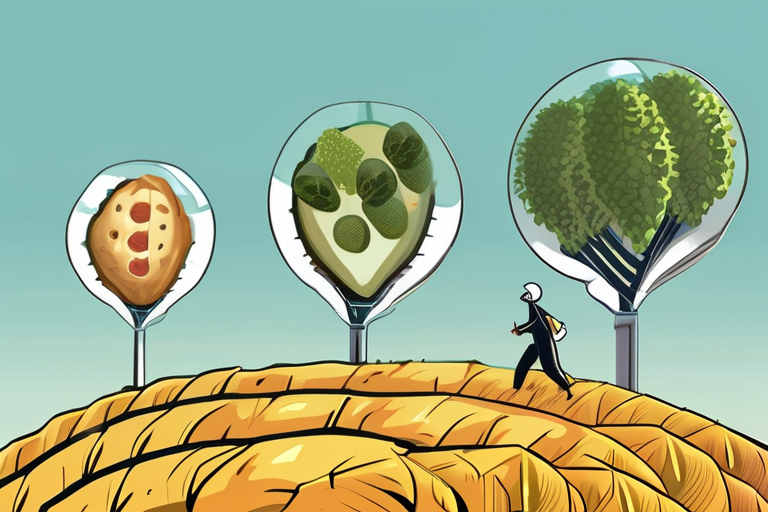Record Harvests Make Famines Far Rarer, but Hunger Persists
Despite producing more food crops than ever before, famine remains a persistent threat to global food security. According to data from the United Nations Food and Agriculture Organization (FAO), record harvests have led to a significant decline in famine cases worldwide.
In 2025, the FAO reported that global cereal production reached an all-time high of 2.8 billion metric tons, surpassing previous records by 10%. This surge in food production has contributed to a substantial decrease in famine cases, with only 12 countries experiencing severe food shortages last year, compared to 25 in 2020.
"This is a remarkable achievement, considering the challenges we've faced in recent years," said Qu Dongyu, Director-General of the FAO. "However, it's essential to note that hunger and malnutrition remain significant concerns, particularly in conflict-affected areas and regions with limited access to food."
The decline in famine cases can be attributed to various factors, including improved agricultural practices, increased investment in irrigation systems, and enhanced crop yields due to climate-resilient technologies. Additionally, international efforts to address food insecurity have led to the establishment of programs such as the World Food Programme's (WFP) School Meals Program, which provides nutritious meals to over 15 million children worldwide.
Despite these advancements, hunger persists in many parts of the world. According to the FAO, approximately 820 million people suffer from hunger globally, with the majority living in developing countries. Conflict, climate change, and economic instability continue to exacerbate food insecurity, making it challenging for communities to access nutritious food.
In conflict-affected areas such as Yemen, Somalia, and South Sudan, food shortages have become a recurring issue due to ongoing conflicts and displacement of populations. "We've seen significant improvements in food production, but the impact is limited when people are forced to flee their homes or live in areas with restricted access to food," said WFP Executive Director David Beasley.
To address these challenges, international organizations and governments have launched initiatives aimed at improving food security and reducing hunger. The FAO has established a global initiative to promote sustainable agriculture practices, while the WFP is working with local partners to develop more effective emergency response systems.
As the world continues to grapple with the complexities of food insecurity, experts emphasize the need for sustained efforts to address the root causes of hunger. "We've made significant progress in reducing famine cases, but we must remain vigilant and committed to finding solutions that benefit all communities," said Qu Dongyu.
Background:
The FAO has been tracking global food production and famine cases since 1961. The organization's data indicates a steady decline in famine cases over the past decade, with some exceptions due to conflict and climate-related disasters.
Additional Perspectives:
"While record harvests are a welcome development, we must not forget that hunger is often linked to broader issues such as poverty, inequality, and lack of access to education," said Dr. Maria-Luisa Fornés, a food security expert at the International Fund for Agricultural Development (IFAD).
"The decline in famine cases is a testament to the power of international cooperation and collective action," added Beasley.
Current Status:
As global cereal production continues to rise, efforts to address hunger and malnutrition remain a pressing concern. The FAO has set ambitious targets to reduce hunger by 50% by 2030, while the WFP is working towards providing nutritious meals to an additional 10 million children worldwide.
Next Developments:
The FAO will host a global conference in 2026 to discuss strategies for achieving sustainable agriculture practices and reducing food waste.
The WFP has launched a new initiative aimed at improving emergency response systems in conflict-affected areas.
*Reporting by Vox.*



 Hoppi
Hoppi

 Hoppi
Hoppi

 Hoppi
Hoppi

 Hoppi
Hoppi

 Hoppi
Hoppi

 Hoppi
Hoppi











